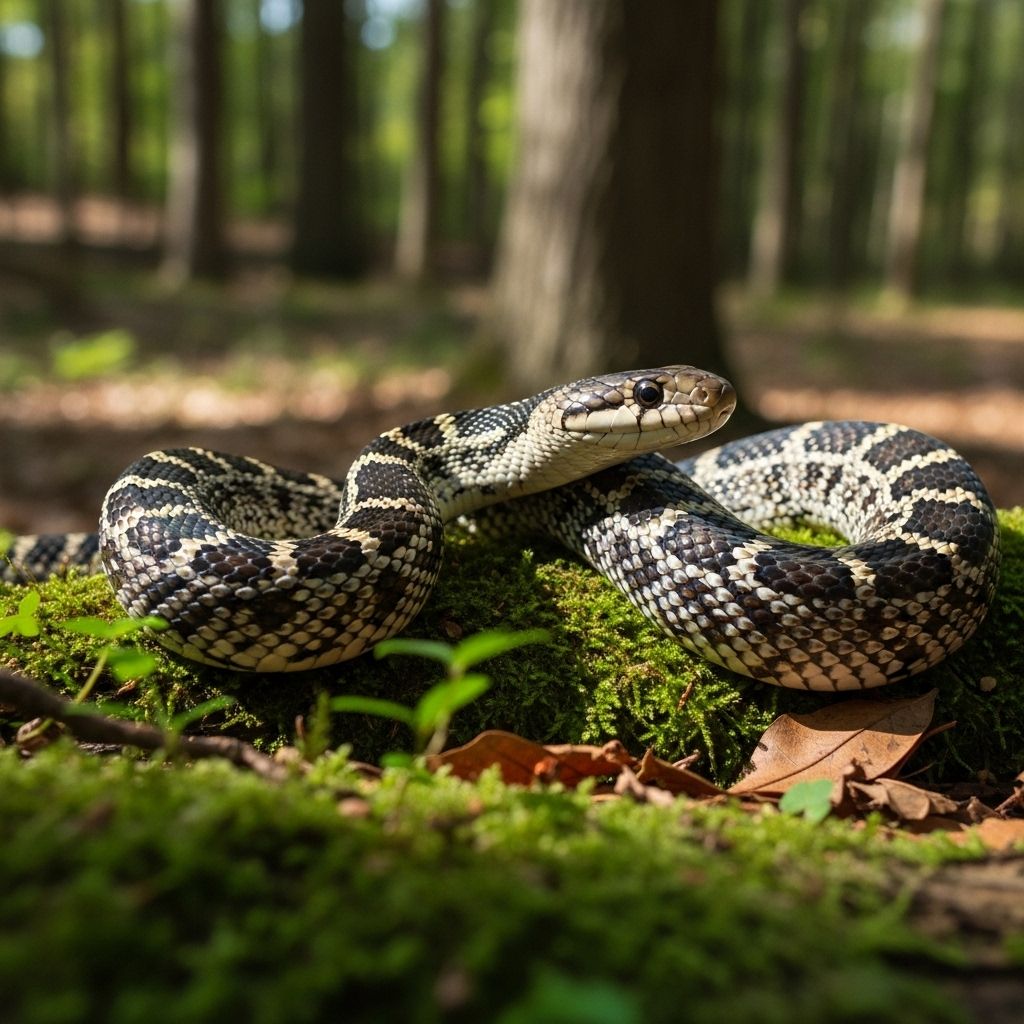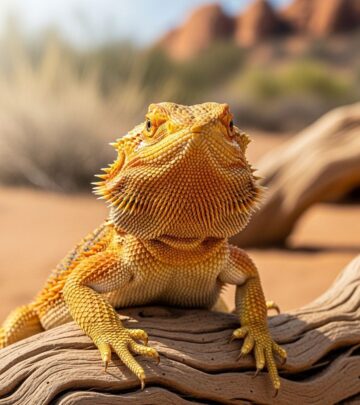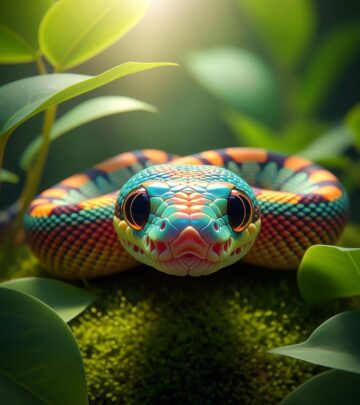Rat Snakes: Care, Behavior, Species, and Facts
Proper habitat, diet, and handling lead to confident, content reptile companions.

Rat Snakes: Care, Behavior, Species, and Fascinating Facts
Rat snakes are among the most widespread and diverse groups of non-venomous snakes, appreciated for their ecological role as natural rodent controllers and their manageability as pets. This comprehensive guide explores the world of rat snakes—from their natural habitats and care requirements to behavior, handling, and the most popular species for herpetology enthusiasts.
Overview and Natural History
Rat snakes belong to the subfamily Colubrinae within the large Colubridae family, which accounts for about 75% of all snake species worldwide. Widely distributed across the Northern Hemisphere, rat snakes inhabit a variety of environments, displaying remarkable adaptability and resilience. Their reputation as expert climbers and their valuable role in rodent control have made them both respected wildlife and popular pets.
Scientific Classification
| Family | Colubridae |
|---|---|
| Subfamily | Colubrinae |
| Common Genera | Pantherophis (New World), Zamenis, Orthriophis, Elaphe (Old World) |
| Notable Species (U.S.) | Eastern rat snake (Pantherophis alleghaniensis), Texas rat snake (P. obsoletus), Corn snake (P. guttatus) |
Distribution and Habitat
Rat snakes are found across North America, Europe, and Asia. In the United States, their range covers much of the East and Central states, from New England and the Midwest, into the South and Texas. They thrive in a variety of environments:
- Wooded forests and mature woodlands
- Swamps and wetlands
- Farmlands, fields, and grasslands
- Suburban and rural buildings, barns, attics, and abandoned structures
- Edges of streams and rivers, rocky uplands, and occasionally high up in trees
Eastern rat snakes, for example, may be found as far north as southern Ontario and Vermont and as far south as central Georgia and Louisiana. Habitat preference is shaped by the presence of prey (primarily rodents), suitable hiding spots, and hibernation sites (hibernacula).
Physical Characteristics
- Size: Most rat snakes reach 3.5 to 7 feet (1–2 meters) in length when fully grown.
- Coloration: Adults may show black, brown, yellow, gray, orange, or red, often with checkerboard or blotched patterns depending on the species.
- Head: Typically wider than the neck, with distinct jaw structure; the chin and throat are often white or creamy in appearance.
- Scales: Diamond-shaped dorsal scales, with long, narrow ventral scales called scutes aiding in climbing.
Behavior and Temperament
In the wild, rat snakes are renowned:
- For being excellent climbers and swimmers, easily able to scale rough-barked trees, fences, and even the walls of buildings.
- As active hunters: typically diurnal in cool weather but may shift to night activity in hotter months.
- For their docile nature: most are not aggressive unless threatened; when approached, they may freeze, assume a kinked posture, vibrate their tail, or expel a pungent musk as a defense.
Over years of captive breeding, rat snakes like the corn snake have become even more tolerant of handling, making them ideal pets for both beginners and advanced keepers.
Defensive Behaviors
- Coiling and remaining motionless
- Vibrating the tail rapidly to mimic rattlesnakes
- Expelling foul-smelling musk to deter threats
Diet and Feeding Habits
Rat snakes are constrictors: they wrap around their prey and suffocate them before swallowing whole. Their diet varies by age and species:
- Juveniles: Eat mostly frogs, lizards, small rodents, and occasionally birds.
- Adults: Primarily target rodents—mice, rats, chipmunks, squirrels—as well as birds and bird eggs.
- Occasional opportunistic feeding on amphibians, small mammals, and reptiles.
In captivity, their diet consists mainly of appropriately-sized frozen/thawed mice or rats, provided once every 7 to 14 days depending on age and size. Clean water must always be available.
Reproduction and Life Cycle
Rat snake breeding seasons range from spring to early summer, with the following generalized pattern:
- Courtship may involve males wrestling or biting the female’s neck.
- Egg laying: Females deposit clutches of 4 to 44 eggs in concealed, moist, and warm locations such as rotting logs or under leaf litter.
- Eggs hatch after 5-9 weeks; hatchlings are independent from birth and often remain near the nest for up to two years.
- Lifespan: In the wild, mortality is high among juveniles, but adults may live 10 to 20 years; with proper care, captive individuals may exceed 20 years.
Popular Rat Snake Species
Several rat snake species are regularly kept as pets, each with unique color morphs and natural behaviors:
- Corn Snake (Pantherophis guttatus): Known for stunning colors and ease of care, the corn snake is an excellent beginner pet.
- Texas Rat Snake (P. obsoletus): Larger and more robust, these often display striking patterns and thrive in captivity.
- Eastern Rat Snake (Black Rat Snake, P. alleghaniensis): Typically black with a white chin and belly, grows quite large; calm and hardy.
- Yellow Rat Snake (P. alleghaniensis quadrivittata): Found primarily in the southeastern U.S., displaying vivid yellow stripes.
- Gray Rat Snake (P. spiloides): Native to the Midwest and Southeast, often with subtle, gray blotched patterns.
Rat Snakes as Pets: Care, Housing, and Health
Rat snakes are widely recommended for beginner herpetologists and hobbyists due to their manageable size, docility, and straightforward care. Here are the key care considerations:
Housing
- Enclosure: A secure, escape-proof terrarium; a 20–40 gallon tank is suitable for most adults.
- Substrate: Aspen shavings or cypress mulch to retain humidity and allow burrowing (avoid cedar or oily woods).
- Hides: Provide at least two—one on the warm side, one on the cool side of the enclosure.
- Climbing branches and enrichment: Essential for exercise and mental stimulation, reflecting their natural climbing habits.
- Water bowl: Large enough for soaking and drinking; clean and refill regularly.
- Humidity: Varies by species, but most do well with 40–60% relative humidity.
Temperature and Lighting
- Warm side: 85–90°F (29–32°C), provided by an under-tank heater or ceramic heat emitter.
- Cool side: 75–80°F (24–27°C).
- Night: Temperatures can drop slightly but should not fall below 70°F (21°C).
- Lighting: UVB is not strictly required for most rat snakes but can be beneficial; provide a natural photoperiod (12 hours light/dark).
Feeding and Nutrition
- Feed appropriately sized mice or rats; food items should be about as wide as the thickest part of the snake’s body.
- Feed juveniles every 5–7 days; adults every 10–14 days.
- Offer pre-killed prey to prevent injury, thaw well before feeding.
- Always provide fresh, clean water.
Handling and Temperament
- Wash hands before and after handling.
- Support the snake’s body fully; never grab by the tail or restrain the head unless necessary for health reasons.
- New snakes may be nervous but generally adapt well with regular, gentle handling.
- Avoid handling during or just after shedding, or for at least 24 hours after feeding.
Common Health Concerns
- Respiratory infections: Signs include open-mouth breathing, wheezing, or excessive mucus.
- Mites and parasites: Look for tiny moving specks or abnormal skin shedding.
- Retained shed: Ensure humidity is sufficient and include rough surfaces to help shed skin.
- Anorexia: Temporary fasting is normal before shedding, but prolonged refusal to eat should prompt veterinary consultation.
Regular monitoring and a clean enclosure are vital for long-term health.
Conservation and Ecological Importance
Rat snakes are not generally endangered, though regional declines have occurred due to habitat loss, deforestation, road mortality, and human persecution. They are protected in some states. As natural predators of rodents, they play a significant role in controlling pests that impact agriculture and human health.
Despite their benefits, rat snakes are often mistakenly killed due to misidentification or fear. Education and awareness are key to ensuring their continued survival and ecological contributions.
Fun Facts About Rat Snakes
- They have scales covering every part of their body—even their eyes, which lack eyelids and never blink.
- Rat snakes use their forked tongue and Jacobson’s organ to “smell” chemical cues in the air and track prey.
- Many people believe rat snakes are slimy, but their scales are dry and smooth to the touch.
- Rat snakes sometimes vibrate their tail in dry leaves to imitate rattlesnakes as a defensive strategy—a classic case of Batesian mimicry.
- They are among the few snake species commonly seen climbing vertical brick walls or rafters in search of prey.
Frequently Asked Questions (FAQs)
Are rat snakes venomous?
No, rat snakes are non-venomous constrictors. They subdue prey by wrapping around and suffocating it, not with venom or fangs.
Are rat snakes dangerous to humans or pets?
Rat snakes are generally not dangerous. They can bite if provoked, but their bites are rarely serious and usually defensive. Their value in controlling rodents far outweighs any potential risk.
How long do rat snakes live?
In the wild, lifespans are often 10–15 years due to natural hazards, but in captivity—with proper care—rat snakes can live 20 years or more.
Can rat snakes swim and climb?
Yes, they are excellent swimmers and climbers, commonly observed in trees, barns, and even crossing streams.
What do I do if I find a rat snake in my home or yard?
If a rat snake enters your home or outbuilding, the best action is to gently guide it outside using a broom or call a local wildlife rehabilitator. Never attempt to kill it—these snakes are beneficial and protected in some areas.
Further Reading and Resources
- Check with local wildlife agencies for identification guides and regulations regarding rat snakes in your area.
- For detailed husbandry tips, consult reptile care books or join herpetology forums and societies specializing in colubrids.
- Visit natural history museums, zoos, or nature centers for live rat snake exhibits and educational programs.
References
- https://srelherp.uga.edu/snakes/rat-snake/
- https://a-z-animals.com/animals/rat-snakes/
- https://cosleyzoo.org/eastern-rat-snake/
- https://www.nwf.org/Educational-Resources/Wildlife-Guide/Reptiles/Black-Rat-Snake
- https://www.mass.gov/info-details/eastern-ratsnake
- https://www.livescience.com/53855-rat-snake.html
- https://www.floridamuseum.ufl.edu/florida-snake-id/snake/eastern-ratsnake/
- https://www.dirttreeswildlife.org/black-rat-snake
- https://en.wikipedia.org/wiki/Rat_snake
Read full bio of Sneha Tete












